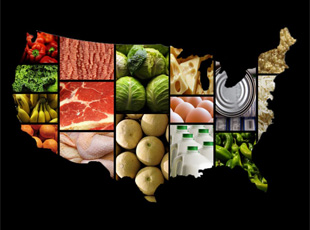Food tracing is a growing concern for global food supply
Food tracing is a growing concern for both businesses and consumers who want to know exactly where their food is coming from, but the path of the global food supply is a winding one and the increasing complexity of the world’s food system can make it difficult to trace products back to their source.
 The U.S. Food and Drug Administration says the U.S. food supply is among the safest in the world but although food tracing is a growing concern, there are still about 48 million cases of foodborne illness each year according to government estimates. The FDA says the illnesses result in an estimated 128,000 hospitalizations and 3,000 deaths.
The U.S. Food and Drug Administration says the U.S. food supply is among the safest in the world but although food tracing is a growing concern, there are still about 48 million cases of foodborne illness each year according to government estimates. The FDA says the illnesses result in an estimated 128,000 hospitalizations and 3,000 deaths.
Behind the scenes, the Global Food Traceability Center, based in Washington, officially launched in July by the Institute of Food Technologists, is working to establish itself as a clearinghouse for efforts to protect and improve the global food supply.
Wegman’s Food Markets and the National Center for Food Protection and Defense are the latest groups to sign as founding sponsors of the center, joining Cargill Inc., Mars Inc., Walmart, PepsiCo, Intertek, the National Fisheries Institute and other groups that support the establishment of the not-for-profit, scientific clearinghouse for unbiased collaboration on product tracing solutions.
“At Wegmans, we believe there needs to be a consistent approach to traceability for the food industry,” Colleen Wegman, president of Wegmans Food Markets Inc., said in a statement.
Brian Sterling, operations director for the GFTC says the intent of the center is to “increase the capability of industry and government to respond to those inevitable situations where things go sideways, when things don’t go the way they’re supposed to go.”
While there is a great deal of information available within individual organizations about where their products come from, the lack of a uniform system of lot numbers and invoice codes can hamper tracing efforts.
Francis F. Busta, former president of the IFT and director emeritus of the National Center for Food Protection, said “time is the enemy” when food-related problems occur, putting lives and livelihoods at stake.
“This center will assist companies to better trace the paths of products through the supply chain to improve food safety, mitigate risk and avoid devastating health consequences and economic impacts to the food system,” Busta said in a statement.
The goal is to create systems that can actually talk to one another, that help producers and regulators get to the source of the problem before people get sick.
“Beyond that, consumers are really looking for more information,” Sterling told UPI. “Is it organic? Is it halal? Is it local? Is it environmentally friendly? Is it sustainable?”
“All of those things require systems,” he said. “The information is out there.”
The challenge, he said, is getting access to that information in a timely way.
“We can develop a system that will actually work for the public good,” he said. That system he said could also help businesses drive down waste, improve margins and increase market share.
“What we want to do is get the food system collaborating,” said Sterling, who offered the example of the Canadian grocery store chain Sobeys, which has partnered with Ecotrust Canada’s Thisfish traceability program. Customers are able to use the program to trace a variety of fresh and frozen seafood products right back to the fisherman.
Fishermen tag their catches with a unique code uploaded to Thisfish.info. The information is updated as the fish travels through the supply chain.
“This innovation not only increases community access to markets, it creates an unprecedented level of transparency and trust across the seafood supply chain by providing information to support both regulator requirements and consumer spending decisions,” Ecotrust Canada says on its website.
Sobeys said traceable seafood products are also available at Thrifty Foods and IGA stores in western Canada,
Other approaches, such as QR codes that shoppers access with their smartphones, will offer the opportunity to better understand where their food is coming from.
“Retailers and food processors are starting to put two-and-two together and come up with their own approaches,” Sterling said.


